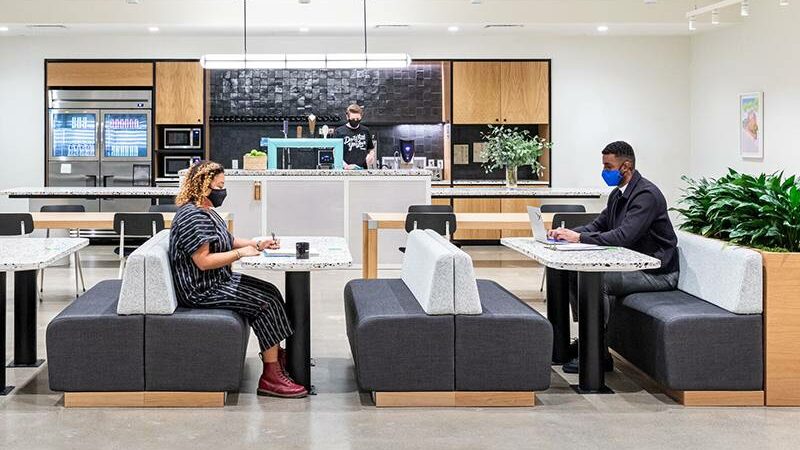One bright spot from the pandemic is that companies are discovering new ways of working that alleviate inefficiencies such as long daily commutes, expensive offices, and inefficient use of space.
This doesn’t mean that physical headquarters are no longer necessary, but as hybrid work models become more prevalent around the world, companies are realizing the benefits of reevaluating their workspace strategies to better align with how their teams actually work.
The rise of hybrid working models
A hybrid working model means that employees can split their working hours between flexible on-site office space, headquarters, and working from home.
Hybrid working is answering the call of employees – a recent survey showed that 85% would prefer to work hybridly going forward rather than returning to a full-time office. It also presents an opportunity for a more streamlined, sustainable and tailored approach to corporate real estate, which makes much more business sense than simply doing what has been done before.
Essentially, it’s about decentralizing a company’s office space from a single central headquarters, giving employees access to a network of locations from companies like IWG, which offers 4,000 locations in over 120 countries.
This could mean downsizing old headquarters with capacity for an entire team, and instead pursuing solutions that allow companies to increase or decrease the amount of space they use based on changing needs.
Unlike traditional office leases, where fixed long-term terms are the norm, companies with flexible workspaces have the freedom to expand or reduce their portfolio of workspaces as needed. This makes sense now as companies seek to meet employees’ desire to work from anywhere.
Sustainable Solutions
As customers develop strategies for more sustainable operations, the hybrid office model can support this in a number of ways, starting with its impact on commute culture. According to Numbeo, one of the world’s largest databases of user-contributed data, the average South African travels 22km one way.
According to report, drivers in any city spend between 22 and 35 minutes on the road, taking into account the time it takes to travel 10km.
A survey conducted by Statistica backs up this timing. 2,032 people took part in the survey, answering the question, “On average, how long is your daily commute to work/school/university (one way)? .”
Based on responses, most South Africans report a daily commute time of between 15 and 29 minutes (36%), and between 30 and 59 minutes (25%). By eliminating the daily commute for the entire team through hybrid working, companies significantly reduce their employees’ total carbon footprint.
By using only as much workspace as they actually need, companies also avoid wasting light, heating, water and other resources, resulting in significant cost savings.
Improved mental well-being
Similarly, hybrid working models aim to create a working environment that is more sustainable for employee well-being.
As companies intensively look for ways to reduce team burnout and improve people’s mental health, hybrid working has become an attractive option.
It allows team members to work from home when needed, or access modern, high-quality, flexible workspaces in their neighborhoods if they want to increase social interaction or better separate work and home.
As flexible office spaces continue to develop in new locations outside city centers, companies can offer employees attractive workspaces near local shopping centers, estates, or favorite social venues, promoting a better work-life balance than traditionally. This daily commute to the city center.
- Mac Miller’s Long-Awaited Album ‘Balloonerism’ Drops Soon - November 22, 2024
- WhatsApp Announces Upcoming Voice Message Transcription Feature - November 22, 2024
- Google doodle celebrates the Lebanon’s Independence Day - November 22, 2024





